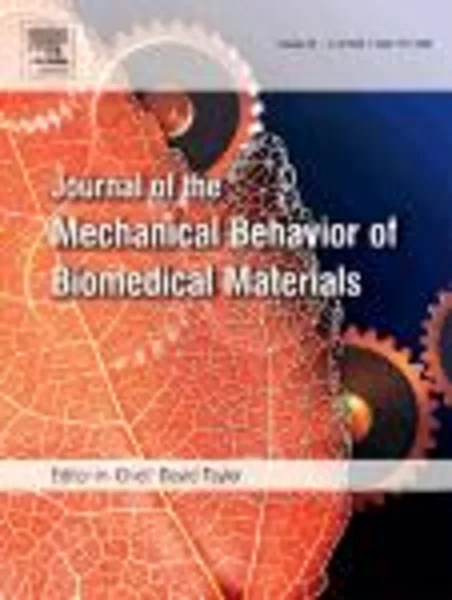-
on the role of oxygen vacancies, aliovalent ions and lattice strain in the in vivo wear behavior of alumina hip joints
جزئیات بیشتر مقاله- تاریخ ارائه: 1394/01/01
- تاریخ انتشار در تی پی بین: 1394/01/01
- تعداد بازدید: 598
- تعداد پرسش و پاسخ ها: 0
- شماره تماس دبیرخانه رویداد: -
we have visualized at the nanometer scale the topological, chemical and mechanical characteristics of long-term in vivo exposed bearing surfaces of femoral heads made of monolithic alumina. four self-mated alumina retrievals were studied, which were exposed in the human body for relatively long periods of time ranging between 7.7 and 10.7 yrs. besides conventional morphological features, monitored by atomic force microscopy, the topographic distributions of point defects and lattice strain on the surface of the heads were systematically probed by collecting high spatially and spectrally resolved cathodoluminescence spectra from zones of different wear severity. three types of optically active point-defect site could be detected: (i) oxygen vacancies; (ii) substitutional (aliovalent) cations; and, (iii) interstitial aluminum cations. these luminescent sites represent the main defects progressively developed in the alumina lattice during exposure in human hip joints. a clear evolution toward (environmentally driven) off-stoichiometry was found with progressing wear. moreover, the shallow electro-stimulated optical probe also detailed the presence of lattice strain fields (of both elastic and plastic nature) stored in the very neighborhood of the bearing surface. the present spectroscopic characterizations enable substantiating important tribochemical interactions between bearing surfaces and in vivo environment as pivotal parts of progressive events of wear degradation.
مقالات جدیدترین رویدادها
-
استفاده از تحلیل اهمیت-عملکرد در ارائه الگوی مدیریت خلاقیت سازمانی و ارائه راهکار جهت بهبود
-
بررسی تاثیر ارزش وجوه نقد مازاد بر ساختار سرمایه شرکت های پذیرفته شده در بورس اوراق بهادار تهران
-
بررسی تأثیر سطح افشای ریسک بر قرارداد بدهی شرکت های پذیرفته شده در بورس اوراق بهادار تهران
-
بررسی تأثیر رتبه بندی اعتباری مبتنی بر مدل امتیاز بازار نوظهور بر نقد شوندگی سهام با تأکید بر خصوصی سازی شرکت ها
-
تأثیر آمیخته بازاریابی پوشاک ایرانی بر تصویر ذهنی مشتری پوشاک ایرانی (هاکوپیان)
-
بررسی پتروگرافی و پتروفابریک میکاشیست های کمپلکس ژان واقع در نوار سنندج – سیرجان
-
سنجش پایداری اجتماعی در محلات شهری (مطالعه موردی: محله های مرداویچ و مفت آباد شهر اصفهان)
-
membrane gas separations and post-combustion carbon dioxide capture: parametric sensitivity and process integration strategies
-
effect of joint opening on p-wave velocity measurement in andesite rock samples
-
studies on stability and coking resistance of ni/batio3–al2o3 catalysts for lower temperature dry reforming of methane (ltdrm)
مقالات جدیدترین ژورنال ها
-
مدیریت و بررسی افسردگی دانش آموزان دختر مقطع متوسطه دوم در دروان کرونا در شهرستان دزفول
-
مدیریت و بررسی خرد سیاسی در اندیشه ی فردوسی در ادب ایران
-
واکاوی و مدیریت توصیفی قلمدان(جاکلیدی)ضریح در موزه آستان قدس رضوی
-
بررسی تاثیر خلاقیت، دانش و انگیزه کارکنان بر پیشنهادات نوآورانه کارکنان ( مورد مطالعه: هتل های 3 و 4 ستاره استان کرمان)
-
بررسی تاثیر کیفیت سیستم های اطلاعاتی بر تصمیم گیری موفق در شرکتهای تولیدی استان اصفهان (مورد مطالعه: مدیران شرکتهای تولیدی استان اصفهان)
-
سنجش کیفیت و ظرفیت گردشگری با تأکید بر الگوهای رفتاری گردشگران در مشهد
-
رفتارشناسی پیامبر اکرم (ص) در تعاملات اجتماعی با یهودیان مدینه
-
مطالعه تطبیقی نظریه تقلید در باب هنر از دیدگاه فلسفه غرب و فلاسفه ایرانی اسلامی
-
experimental assessment of porous material anisotropy and its effect on gas permeability
-
incorporating of two waste materials for the use in fine-grained soil stabilization




سوال خود را در مورد این مقاله مطرح نمایید :